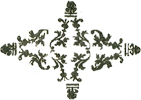
Home
 About Anemi
About Anemi
 Electronic Tables of Contents and Indexes
Electronic Tables of Contents and Indexes
Electronic Tables of Contents and Indexes
Short History
Since September 2008 all Anemi's bibliographic records support Electronic Tables of Contents and Indexes, thanks to a special software module developed with the support of the Operational Program "Information Society".
Within the frame of the same project selected Anemi's bibliographic records were enriched with Electronic Tables of Contents and Indexes, as a pilot application of the new funtionality. Those records form today the Antaeus digital collection.
Antaeus' bibliographic records mainly consist of histories and grammatologies of Modern Greek Literature, histories of the Greek nation as well as other works useful for Modern Greek Studies.
The importance of new functionality for Anemi
The development of Electronic Tables of Contents and Indexes, although applied to only a few, selected records, in the first pilot phase, is of great importance for Anemi. Thanks to this, it is accomplished:
Instructions
To use the electronic tables of contents and indexes, navigate to Antaeus collection and select from it any book that interests you.
In the following example we have chosen the multi-volume work of Konstantinos Paparregopoulos, History of the Greek nation from ancient times up to 1930, additions, notes and improvements by Pavlos Karolidis, Athens, Eleftheroudakis 1932.
The indications «Tables of Contents», «Index» are located at the top of the bibliographic record. Select them to navigate to the material recorded.
Tables of Contents
Choosing the indication «Table of Contents» at the multi-volume History of Paparregopoulos, brings to diplay the table of contents of the first volume of the work. To browse the contents of other volumes, you have to select the indication «View».
For those works that do not have copyright restrictions or for works whose authors and publishers have allowed their open access via the Anemi site, the user can select the -active- page reference link, to move quickly to the digitized page of the book.
Instead, for the books under copyright restrictions, the references to pages appear for information purposes only, and the user should consult the natural item itself, to view the information he is interested.
Electronic Indexes
To use the index of an item follow the same steps you followed for the tables of contents, choosing this time the indication «Index», found at the top of the full bibliographic record, next to the indication «Table of Contents».
As an example we use again the the multi-volume work of Konstantinos Paparregopoulos, History of the Greek nation from ancient times up to 1930, additions, notes and improvements by Pavlos Karolidis, Athens, Eleftheroudakis 1932.
By selecting «Index» the data of the physical indexes unfold in alphabetic order, and the user can choose any active page-reference link to get transfered easily to the corresponding page of the digital file, where the entry is found.
As the amount of data provided in an index is often very large, a very useful feature is the Greek and English Alphabet at the top of each index. The user can thus move easily to the letter he wants, to locate easier the terms of his interest.











